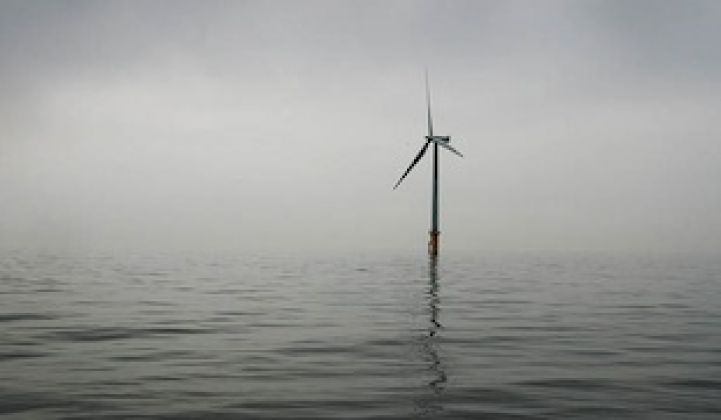As we reported just yesterday, wind power has hit a bit of a rough patch, with installations in the first half of the year down for the third year in a row. But don’t look for this trend to last very long, according to the International Energy Agency.
The agency has just updated its technology roadmap for wind, first put out in 2009, and in the process hiked from 12 percent to 18 percent the target for how much of the world’s electricity wind power could generate by 2050. In the IEA’s hopeful scenario, offshore wind will drive much of the growth, with plummeting costs (down 45 percent) helping to boost offshore’s share of wind power from about 2 percent today to 6 percent in 2020 and 25 percent in 2050.

Mind you, that 18 percent of 2050 electricity generation figure, which IEA used in the headline of its press release, actually appears to be an upper bound. Underlying documents (PDF) state that the roadmap “targets 15 [percent] to 18 percent share of global electricity from wind power by 2050.”
The agency goes on to say that “achieving these targets requires rapid scaling up of the current annual installed wind power capacity (including repowering), from 45 gigawatts in 2012 to 65 gigawatts by 2020, to 90 gigawatts by 2030 and to 104 gigawatts by 2050.” That could be no easy task in the near term, given that the World Wind Energy Association is saying that 2013 new capacity is likely to head in the wrong direction, falling to 35.7 gigawatts.
What gives the IEA its high hopes?
Recent improvement in wind power technologies as well as the changing global energy context explain the higher long-term target. Turbines are getting higher, stronger and lighter, while masts and blades are growing even faster than rated capacity, allowing turbines to capture lower-speed winds and produce more regular output. This facilitates installation in places beyond the best windy spots on mountain ridges or seashores, as well as integration into power systems despite the variability of winds.
The possible obstacles to growth are familiar, the agency says, listing financing, grid integration issues, and difficulties with permits and public acceptance. “To achieve high penetrations of variable wind power without diminishing system reliability, improvements are needed in grid infrastructure and in the flexibility of power systems, as well as in the design of electricity markets,” the IEA said.
***
Editor's note: This article is reposted in its original form from EarthTechling. Author credit goes to Pete Danko.



